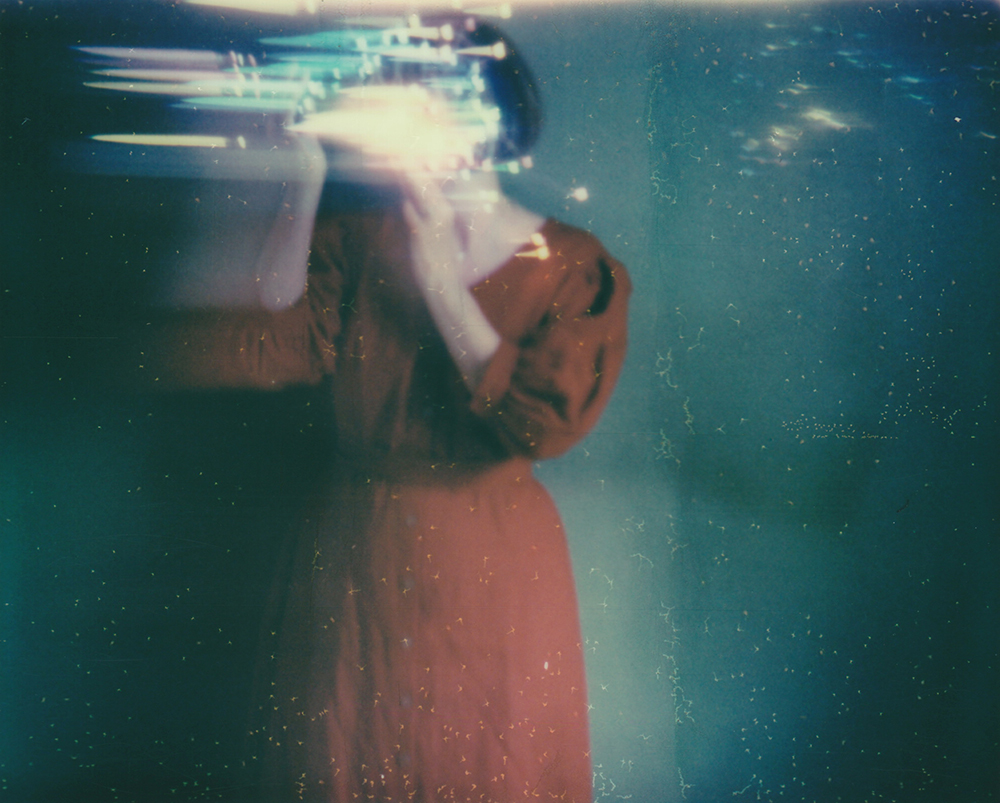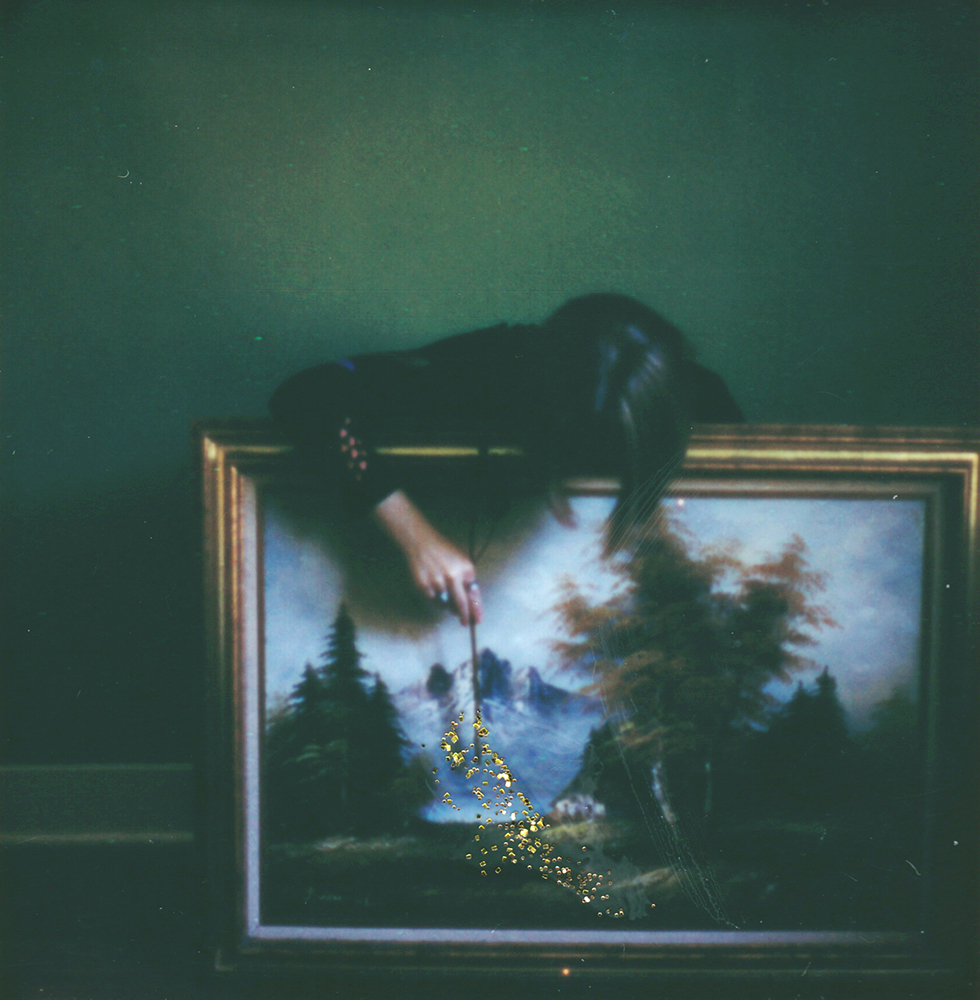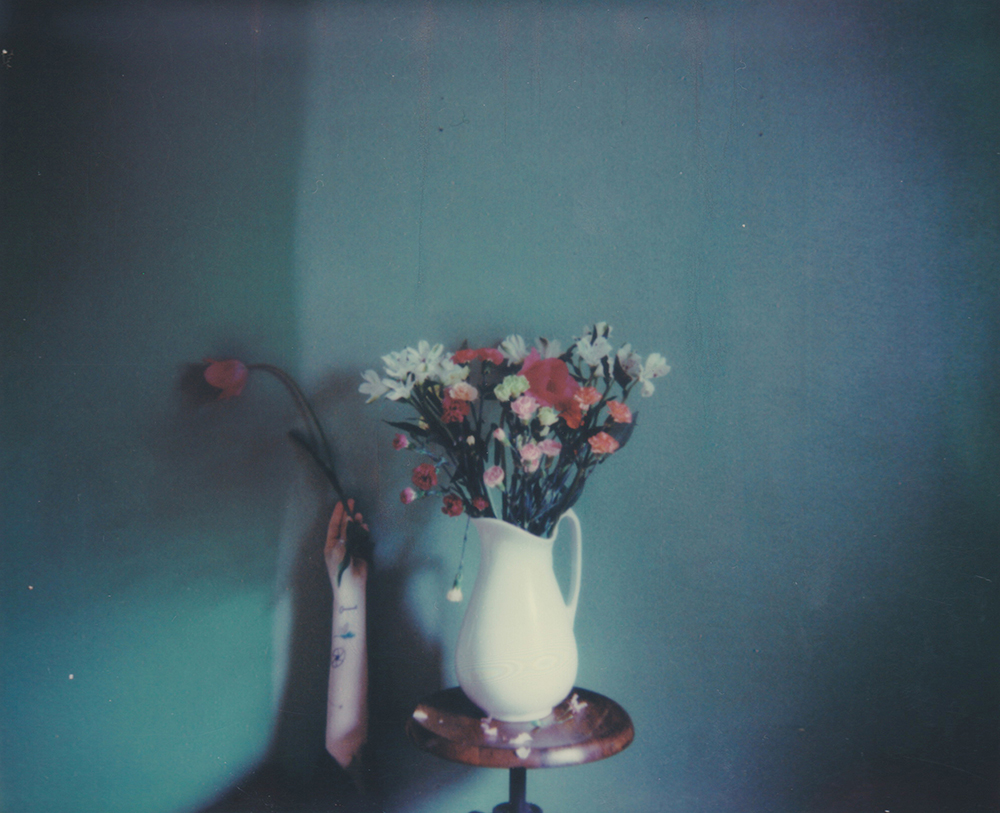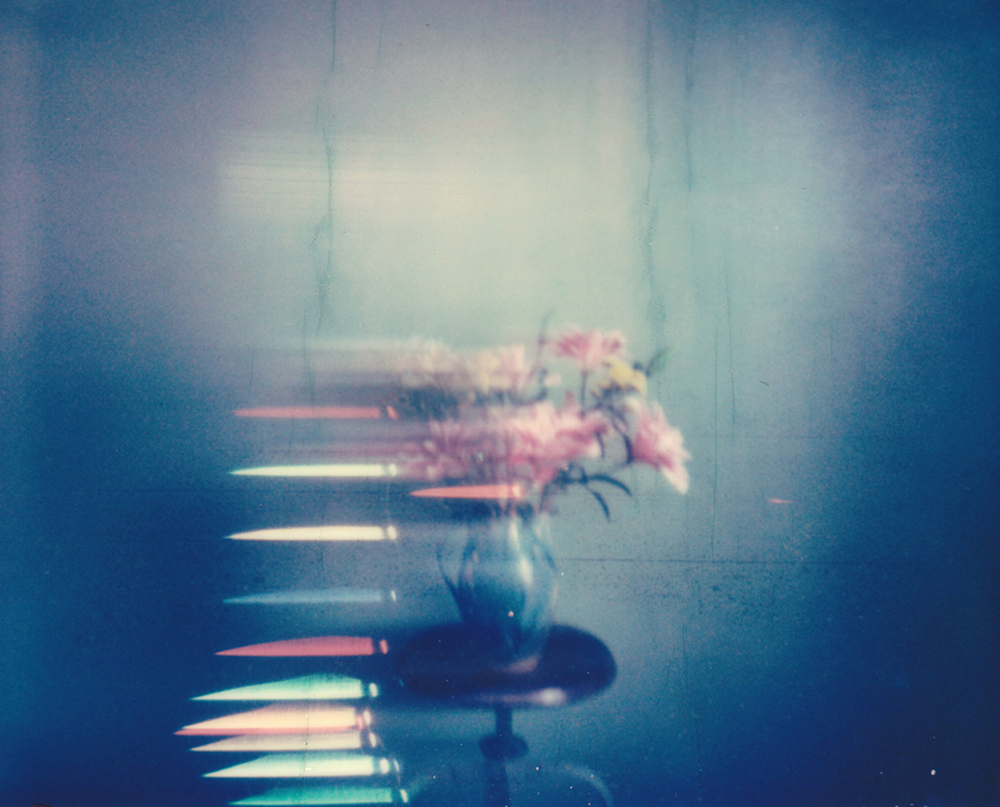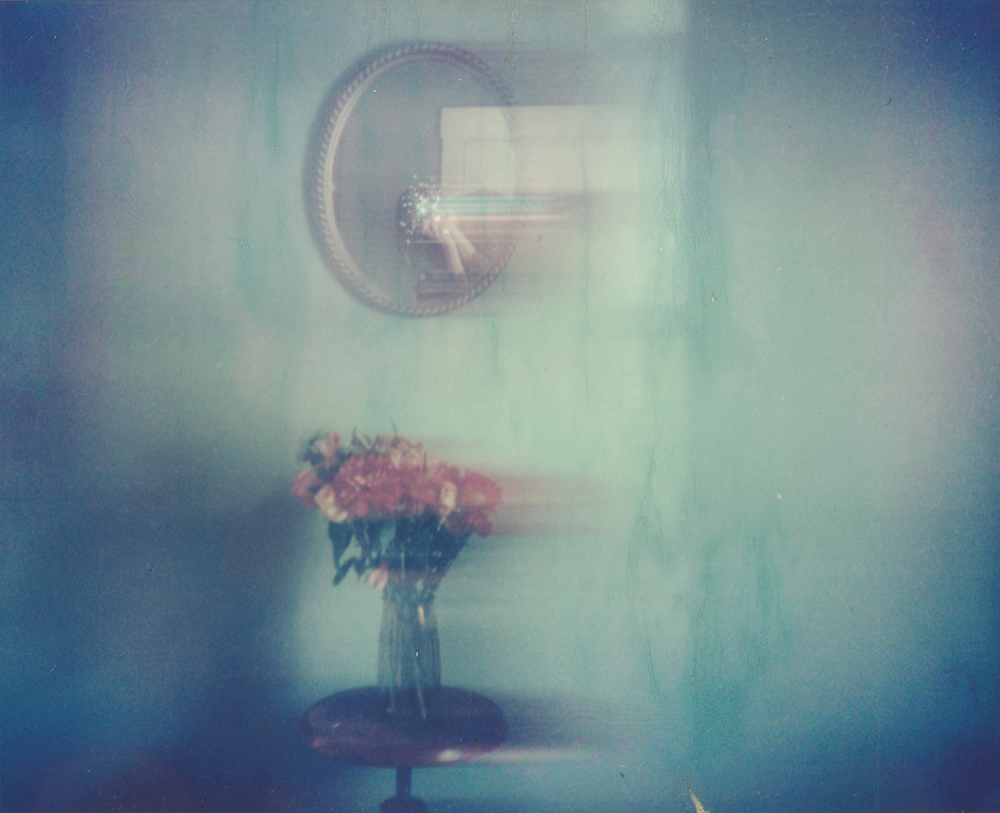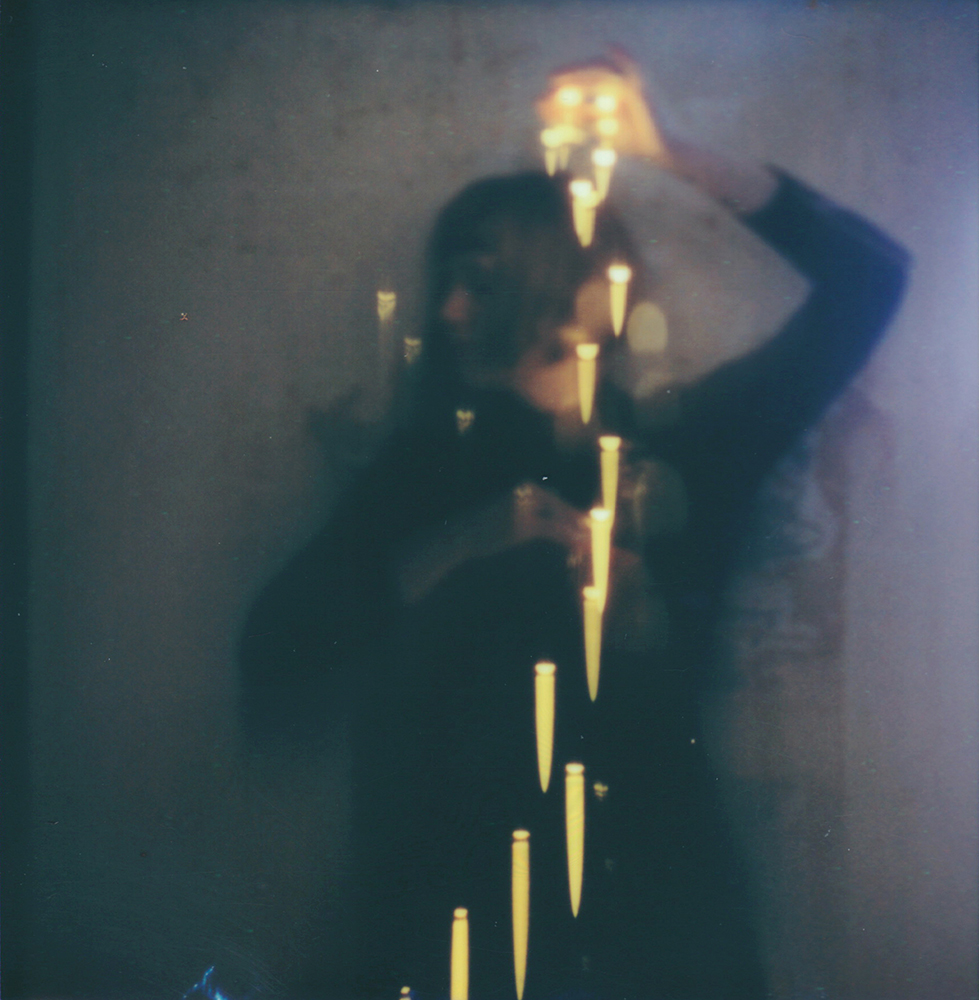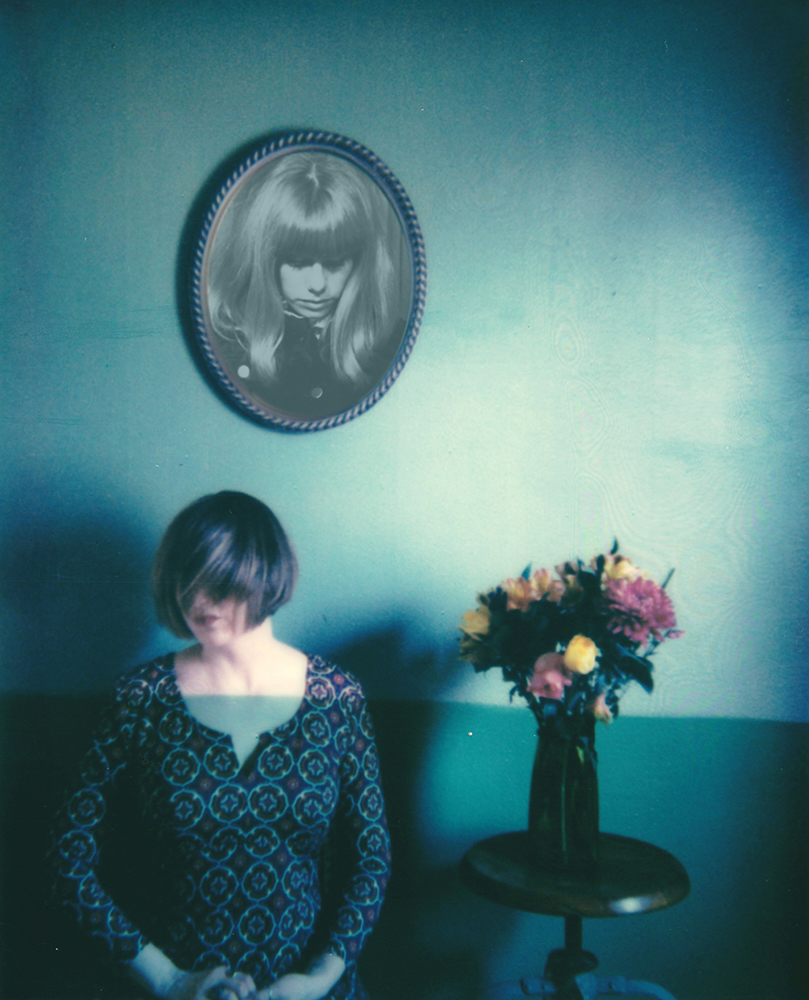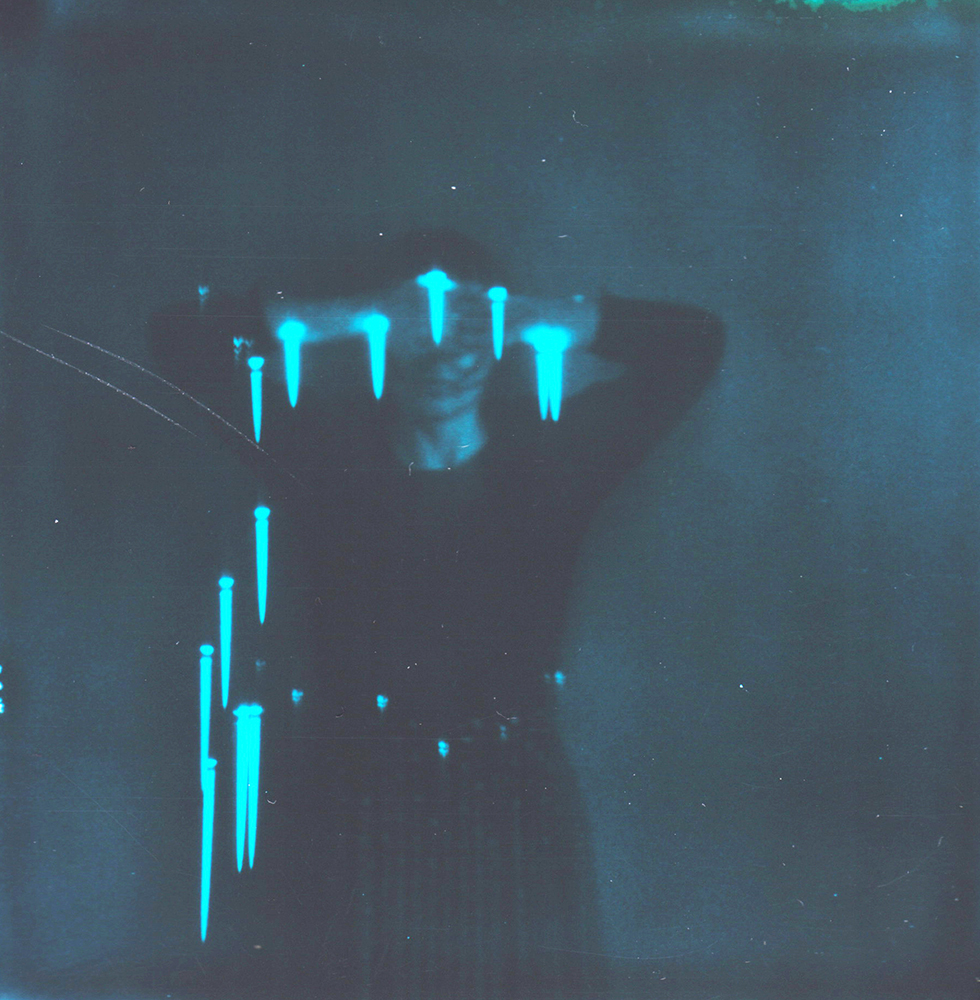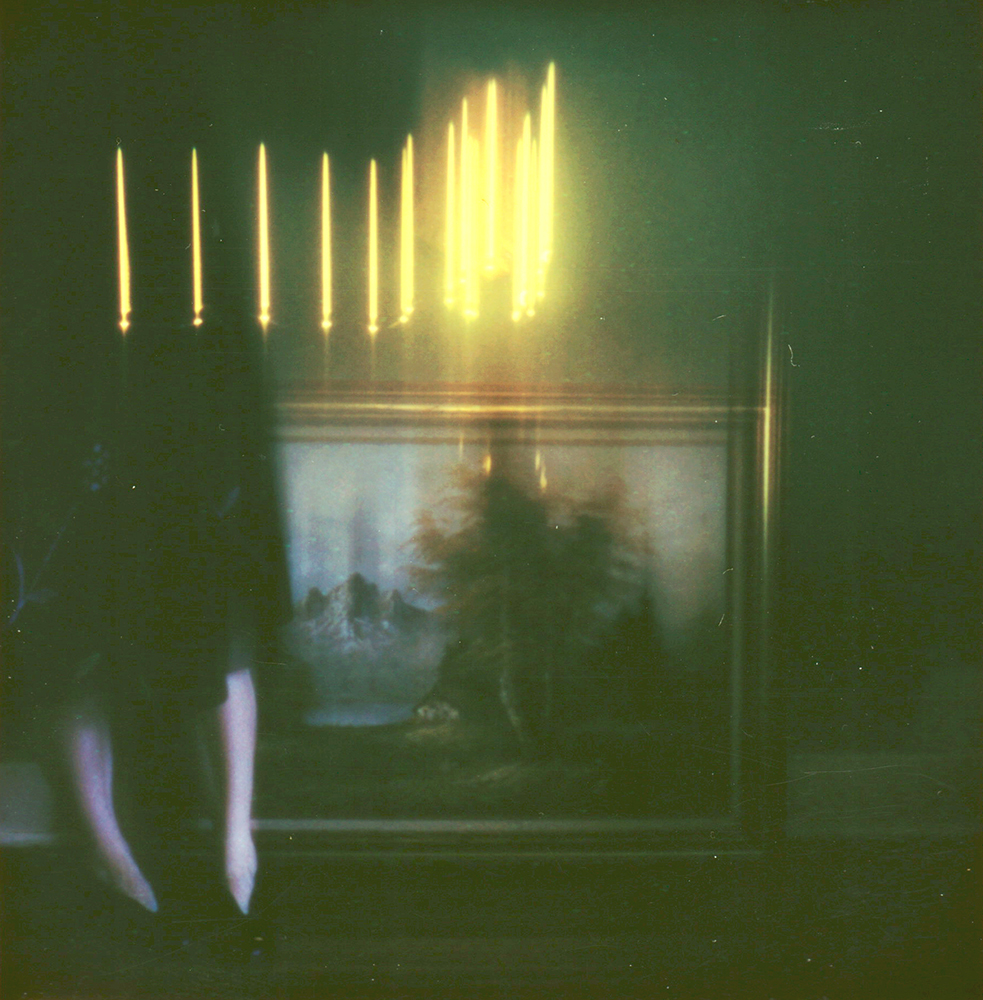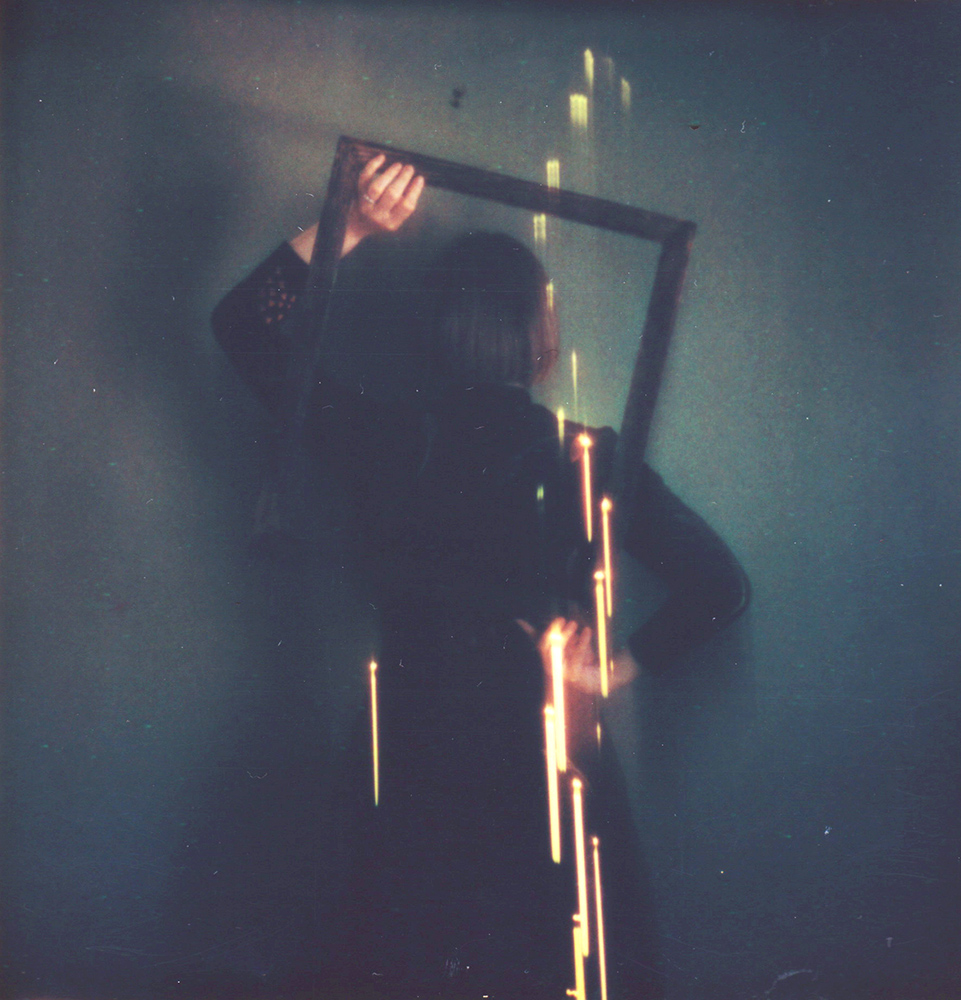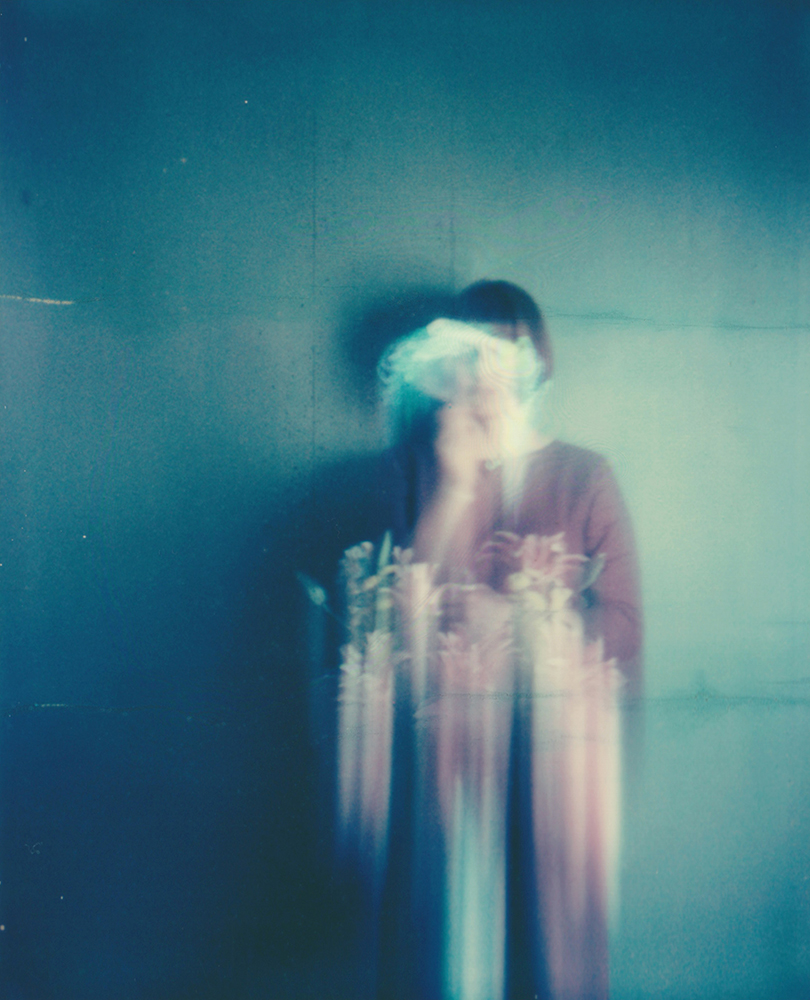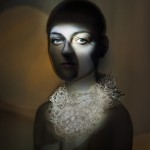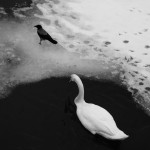Lisa Toboz: Ghost Stories
As humans, we pretend to have control over everything: our work, our family, ourselves, and our lives. This control is only a mirage, as we are unable to predict what will happen next. Lisa Toboz knows this feeling well and has chosen to embrace the fear of uncertainty in her project Ghost Stories.
Using expired film to create ethereal spiritual imagery, Toboz experiments with the ideas of temporality and mortality using her own brush with illness as inspiration. After being in remission from a serious condition, the COVID-19 pandemic hit, forcing Toboz into isolation yet again. Rather than dwell on the circumstances she found herself in, Toboz reached for her camera and began to process her feelings and ideas through her photography. These images hold power within them, allowing us to contemplate the idea of the afterlife and the uncertainty of what will become of us in the end.
Lisa Toboz is a self-taught, Pittsburgh-based artist with a background in writing and literature. Her work explores self-portraiture and creativity as a form of healing using various Polaroid cameras and film. She is inspired by vernacular photography, Victorian spirit photography, and ‘70s supernatural cinema, as well as reading fiction. Her recent photo books include Dwell (Polyseme, 2020) and The Long Way Home (Static Age UK, 2018). Her Polaroid photography can be found in various publications including Shots Magazine, as a featured artist in She Shoots Film: Self Portraits, and Polaroid Now (Chronicle Books, 2021). An editor by trade, she has exhibited internationally, serves as the copy editor for Analog Forever Magazine, and is represented by Instantdreams Gallery (Palm Springs, CA)
Follow Lisa on Instagram: @lisatoboz
Ghost Stories
Ghost Stories continues themes from my Dwell series of isolation, mortality, healing and creativity during times of crisis, most recently the global pandemic, using expired and discontinued Polaroid films, mixed media, and light painting. What started as a lifelong fascination with the supernatural evolved into exploring questions of temporality and legacy during my bout with cancer and eventual remission.
“Ghosts” are nebulous beings that hint at the possibilities of other realms, existing between reality and the imagination. During my yearlong battle with lymphoma, I found curiosity and comfort in Victorian spirit photography, which used photo manipulation to capture the spirits of loved ones after they had passed into an ephemeral existence. Many of the techniques used to trick people into believing supernatural occurrences (double exposures, abstract light forms) are now used in contemporary photography with artistic license to further complicate what we know to be “true.” Photography serves to record the physical world, but spirit photography, at its most emotive, aimed to record the immaterial and unknown, which in turn, helped the living cope with unbearable trauma and loss. Ghost Stories is a visual metaphor for uncertainty, fear, wonder, and unexpected beauty that suggests an alternate survival space when reality is in chaos. -Lisa Toboz
Kassandra Eller: I see that you are a self-taught artist. How did your photographic journey begin? What made you decide to pursue photography?
Lisa Toboz: I originally wanted to be a writer, and I have my MFA in fiction writing. But during grad school when I should have been writing, I was playing hooky on photo excursions. My writing peers talked about how their stories began with a line they heard someone say, almost always rooted in language. But my stories started with an image that popped into my mind, like a film still. I struggled in the MFA program because I wanted to write more experimental prose, and I couldn’t find the way to convey to the page what I wrote in my mind. Looking back, I see now that my creative voice is more effective through images instead of words: what I imagined came out more the way I wanted it to through photography, not writing. In school, I often heard my stories were cinematic, and with photography, people have told me that they see strong narrative. I am an avid reader and editor in my working life, so I am motivated by how writing and photography push the boundaries in art, and how the two mediums can coexist, whether through inspiration or as a physical artwork.
KE: In your statement, you discuss Victorian spirit photography. What about this fascinated you and are there certain aspects of the medium or certain photographers that inspired you?
LT: What fascinates me most about Victorian spirit photography is its inherently eerie beauty, before I even knew anything about the context behind the works. I am drawn to darker subjects and the unknown, so there is that fascination, too. The first spirit images began as accidents due to the long exposures required in early photography, and subjects would often (I imagine) shift around or move because of the seemingly eternal sitting times. As the medium evolved from entertainment to a way of “connecting” with loved ones who had passed on, the weight of the trickery becomes more complex. What we now know as a long exposure gone rogue, or an intentional double exposure, at its most egregious, was a way to capitalize on the living’s grief. But it can also be viewed as a way to comfort and heal a person in emotional pain. Even knowing the photos are illusions gives some sort of hope when facing unimaginable loss. When my mother died 12 years ago, I looked for signs of her spiritual presence in everything because I missed her so much. And when anything manifested that she was there with me, I clung tightly to those moments, whether real or imagined. A photo preserves a person’s spirit (memories) long after their physical body has left us. Sometimes that is all we have left from a loved one. I like to think of a world beyond ours, or the in-between, and photography is adept at catching what we may have initially overlooked.
KE: For Ghost Stories, you say you used expired and discontinued films. What made you decide to experiment with expired film?
LT: Expired films are a metaphor for the unknown: what will the photo look like when it ejects from the camera? There are chemical spills, color shifts, divots––working with expired film is about chance and embracing the imperfect. There is relief in knowing that what happens is out of my control, much like life, and it frees me to work more by instinct and let go.
KE: You mention the idea of uncertainty and fear in your statement. In your opinion, how does uncertainty and fear play a role in your own photographic practice?
LT: I had an English professor who once told me that if you are afraid to write it, then it should be written. I think about this every time I pick up my camera; every time I compose a self-portrait; every time I submit my work for an exhibition or publication, try a new technique, cut up and collage a Polaroid. If I think “no” then I know it’s something that I need to explore personally before it becomes a photo, or while it becomes a photo. Five years ago, when I was undergoing treatment for lymphoma, I photographed all the time through treatments, after procedures and surgeries––I was preserving my imagination through images, and the fear of my illness is what kept me focused during such a chaotic time in my life. There is no place for fear in art. Uncertainty allows us to experiment with our craft, and taking risks strengthens our photographic voices.
KE: In many of these images, the composition is simple. How did you conceive of the compositions? Did you begin with a concept or create them as you photographed?
LT: Sometimes I jot ideas in a notebook, and sketch out a composition (I use that term lightly––my drawing skills are hilarious!). I’ll use one of these ideas to start a photo session and from there I’ll improvise. Usually a prop, an empty room, and color are what drives the composition.
KE: The props you use in these photos seem to be very purposefully chosen. Flowers, photographs, and artwork are the only items that are shown in relation to the subject. These items seem to have an association with death and the afterlife. Would you discuss why you included these specific items and how their inclusion in the images enhances the idea of the supernatural?
LT: Yes, they are (purposefully chosen)! I write down the props I want to use before each photo-therapy day (as I refer to them), and decide how I’ll use them. I look to floriography, the Victorian practice of communicating messages through flower meanings, for what I want to convey through the works. The artworks are either ones my husband painted, or paintings that were passed down to us through family. The photographs are family photographs, or ones we’ve found while out thrifting which tell stories. Flowers in my works are symbolic of funeralia, of life and death, and communication with not only the dead, but the living who view the images. A photograph or painting within a photo is like a mirror or a portal, which adds texture and dimension, adding another layer to storytelling. I try to choose objects that have meaning to me or relate to my history with the hopes that the personal is relatable and universal.
KE: In your images, I notice that viewers are never given a fully exposed face. The subject is partially hidden or there is a manipulation that happens across the face. Why was it important to you to conceal the face?
LT: Even though the project is composed mostly of self-portraits, I don’t think of them as about me, or as trying to establish my identity through the work. Obscuring or manipulating the face lends an ephemeral quality to the subject, much like how I imagine a ghost would look to me if I ever saw one in person. It frees me as subject because I don’t have to worry about showing mood or emotion through facial expression––I’d rather do that through motion and interaction within the confines of a space.
KE: I have found that many times the projects I take on become a way to process my emotions and it sounds as though Ghost Stories did this for you. Did this project become a therapeutic way of understanding and accepting the emotions surrounding your diagnosis?
LT: Dwell, my project before Ghost Stories, documented my emotional journey through having cancer, and then the pandemic hit two years after I went into remission. I felt like, “here we go again!” with staying home to avoid infection, being isolated and deprived of human interaction because of illness. Using photography as a means to cope, quite simply, saved me. It gave me purpose, and allowed me to be something other than a cancer patient, or in the case of the pandemic, it eased fears of the unknown. Even with the unpredictability of working with expired films, and Polaroid film in general, there is comfort in knowing my camera and its quirks, knowing what I want to shoot and how I wish for it to turn out. And quite simply, the magic of taking photographs lifts the spirits (pardon the pun!). It is the one constant that brings me pure joy, where I am allowed to lose myself for a few hours, away from reality. It’s grounding and healing.
KE: To conclude I would like to ask what is next for you. Is there anything you are currently working on?
LT: I want to find a home for Ghost Stories in photo-book form.
KE: Is there anything I didn’t mention that you would like to add?
LT: I think you covered it, but thank you so much for featuring my work. Truly a very exciting way to start the year, I am excited to see it go live!
Posts on Lenscratch may not be reproduced without the permission of the Lenscratch staff and the photographer.
Recommended
-
Ragne Kristine Sigmond: Portraits of Painterly LightDecember 2nd, 2025
-
Mary Pat Reeve: Illuminating the NightDecember 1st, 2025
-
Ricardo Miguel Hernández: When the memory turns to dust and Beyond PainNovember 28th, 2025
-
Pamela Landau Connolly: Columbus DriveNovember 26th, 2025
-
MATERNAL LEGACIES: OUR MOTHERS OURSELVES EXHIBITIONNovember 20th, 2025

